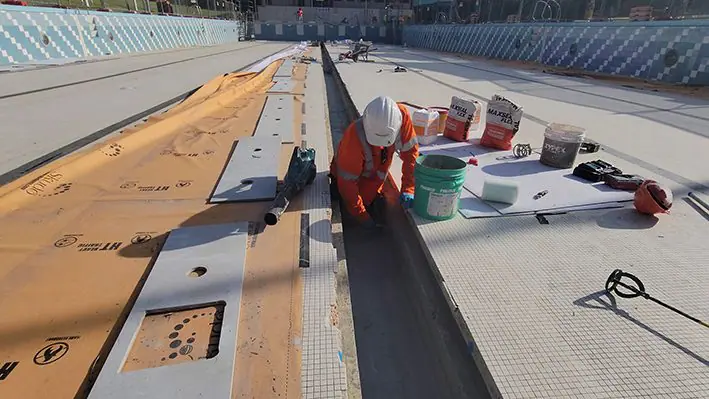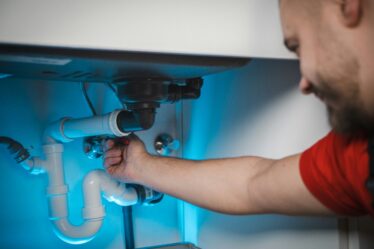
Waterproofing houses in Sydney, Australia is essential to their preservation due to fluctuating weather. Heavy rainfall and storms often bring flooding with it; so protecting it against water intrusion is imperative. Remedial waterproofing service techniques exist that address specific issues caused by moisture; we will discuss each one here to assist people making smart decisions regarding waterproofing their properties.
1. External Waterproofing
To waterproof from the outside is to create a barrier that blocks moisture from entering. This strategy works particularly well in basements and foundations where buildup could cause significant structural damage; basement waterproofing with this technique has proven particularly successful.
Techniques:
- Membrane Application: By covering the exterior walls with waterproof barriers such as bitumen, polythene, rubber or any other suitable materials to form a waterproof shield they prevent rainwater entering their home and cause further damage.
- Drainage Systems: Installing proper drainage systems such as French drains can keep excess water away from the foundation of a property and serve to add an extra defence against its intrusion. Membranes are often also utilized as a part of this strategy to give additional defence from water seeping in.
2. Internal Waterproofing
Internal insulation serves to safeguard the interior of a house from damp conditions that tend to occur on lower levels or basements, particularly for rooms on these levels that tend to get damp more easily. This protection can especially prove vital during periods when humidity levels fluctuate significantly between seasons.
Techniques:
- Sealants: Sealants can help keep water at bay by layering walls and floors inside with sealants that come in liquid form; to create an effective protective shield they can either be painted on directly, sprayed onto, or both!
- Cavity Drains: Cavity drainage systems can help keep moisture away from interior spaces in older homes that might otherwise be difficult to waterproof from outside. They work particularly effectively.
3. Positive And Negative Waterproofing
Positive waterproofing and negative waterproofing are the two primary forms of waterproofing available today, so being aware of their differences will allow you to select an approach most suited to your home environment.
Positive Waterproofing:
Positive waterproofing prevents outside waters from infiltrating buildings by covering their outer surfaces with waterproof membranes or coatings to form an impenetrable barrier to keep out any potential flooding issues. In particular, positive waterproofing works particularly effectively during construction or renovation processes because it ensures there will never be an entry point into any structure that allows outside waters in.
Negative Waterproofing:
Negative sealing can help address water intrusion, if it has already made its way inside a building by applying sealing products on the interior walls and floors to keep out any potential moisture sources. Although effective at temporarily solving existing water problems, negative sealing should only ever be used as a short-term fix compared with positive sealing solutions.
4. Grouting Techniques
Grouting can also provide excellent waterproofing protection by filling cracks and holes on floors and walls with epoxy grout, providing effective repair waterproofing solutions when your basement or floor leaks water. When this method fails to seal leaky spots it works very effectively to seal them shut – an invaluable solution when your floor or basement flooded!
Techniques:
- Polyurethane Injection: With this approach, polyurethane foam injection is used to fill gaps with an expanding seal made by expanding polyurethane foam that expands as soon as the injection begins and forms an effective watertight seal between cracks that move or shift over time. Plastic injection is recommended as the perfect way to cover ongoing cracking issues as its use creates waterproof seals around any shifting or moving gaps that might otherwise remain open – ideal for cracks which keep moving or shifting apart!
- Cementitious Grouting: refers to using a cement-based mixture to fill holes and block water entry; typically this sealing technique works best when combined with other sealant methods for optimal results.
5. Landscape Management
Landscape care can greatly diminish water infiltration into homes by keeping land levels. To avoid having water accumulate around foundations, homeowners must level off land away from it so it pools nowhere. Plants that absorb excess moisture also help ensure an arid atmosphere near properties.
Techniques:
- Swales And Retention Pits: These Retention Pits and Swales To help avoid potential flooding issues in the yard, retention pits and swales can provide essential safeguards that redirect water away from structures like houses.
- Soil Amendments Enhancing drainage can help address water issues at their source and may mean adding organic matter or additives that promote proper structure and drainage capabilities in your base’s soil.
6. Regular Maintenance And Inspection
It is crucial to the long-term success of any waterproofing method to carry out regular checks and inspections to detect water damage as early as possible and repair it quickly when required, no matter which kind of waterproofing solution is employed. Homeowners should regularly examine their properties for signs of paint peeling away, mould growth or wet spots which indicate any water problems within their homes and address these problems immediately if detected.
Conclusion
Sydney homeowners who want to protect their home from water damage need a complete understanding of repair waterproofing methods and products available, along with proper landscaping maintenance practices. Professional inspection and periodic repairs ensure your waterproofing system will continue operating effectively over the course of years – giving you peace of mind!


